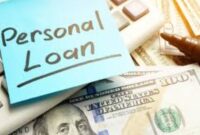In today’s fast-paced world, securing financing for a variety of needs—whether it’s for home improvements, medical expenses, or debt consolidation—can sometimes be a challenge, especially when you don’t have valuable assets to offer as collateral. The good news is that it’s entirely possible to get a loan without needing to pledge property or assets.
This article will provide a thorough guide on how to get a loan without collateral, exploring different types of unsecured loans, eligibility requirements, benefits, and potential risks. Whether you are a homeowner, a renter, a small business owner, or someone simply looking for a personal loan, understanding how to access credit without risking your assets can significantly improve your financial flexibility.
What is an Unsecured Loan?
An unsecured loan is a type of loan that doesn’t require any form of collateral, such as property, car, or savings. This means that the lender approves the loan based solely on the borrower’s creditworthiness, income, and overall financial situation. Examples of unsecured loans include personal loans, credit cards, and student loans.
Unlike secured loans (such as mortgages or auto loans), unsecured loans carry more risk for the lender, which is why they typically come with higher interest rates and stricter eligibility criteria. However, they also provide greater flexibility for borrowers who may not have valuable assets to put up as collateral.
Types of Unsecured Loans
There are several types of unsecured loans available to borrowers. Each type serves different needs, so it’s important to understand how they work and when they may be the best option for you.
1. Personal Loans
Personal loans are one of the most common forms of unsecured loans. These loans can be used for various purposes, including consolidating debt, financing a major purchase, or covering unexpected expenses. Personal loans typically offer fixed interest rates and repayment terms, making them easy to budget for.
2. Credit Cards
Credit cards are another type of unsecured loan. While they are typically used for short-term borrowing, credit cards offer revolving credit, meaning you can borrow and repay repeatedly within your credit limit. They are suitable for everyday purchases but come with higher interest rates compared to personal loans.
3. Student Loans
Student loans are specifically designed for individuals pursuing higher education. These loans are typically unsecured and are issued based on the borrower’s ability to repay, with deferment options available while the borrower is still in school. While federal student loans come with lower interest rates, private loans may offer better terms for creditworthy borrowers.
4. Payday Loans
Payday loans are short-term, high-interest loans intended to cover urgent financial needs until the borrower receives their next paycheck. While they may be accessible, payday loans come with very high-interest rates and are often considered predatory due to their potential to trap borrowers in a cycle of debt.
5. Peer-to-Peer Loans
Peer-to-peer (P2P) lending platforms connect borrowers with individual investors. P2P loans typically offer more flexible terms than traditional loans, and while they are unsecured, they may require a solid credit score and proof of income. These loans can be an excellent option for borrowers who may not qualify for traditional financing.
How to Qualify for an Unsecured Loan
Getting an unsecured loan generally requires meeting certain qualifications. While the specifics can vary depending on the lender and loan type, some common requirements include:
1. Credit Score
Your credit score plays a crucial role in determining whether you qualify for an unsecured loan and what interest rate you will receive. Most lenders prefer borrowers with a good to excellent credit score, typically above 650. A higher credit score signals to lenders that you’re likely to repay the loan on time.
2. Income and Employment Status
Lenders want to know that you have a reliable source of income to repay the loan. They may require proof of employment or a stable income history. If you’re self-employed, you may need to provide tax returns or financial statements to prove your income.
3. Debt-to-Income Ratio
Your debt-to-income ratio (DTI) is an important factor in securing an unsecured loan. Lenders use this ratio to assess whether you have enough income to manage additional debt. A lower DTI indicates a better ability to repay the loan. Generally, a DTI below 36% is considered ideal, although some lenders may accept higher ratios.
4. Loan Amount and Purpose
The amount you wish to borrow and the reason for borrowing can also affect your loan application. Lenders will evaluate whether the loan amount is reasonable based on your income and creditworthiness. Be prepared to provide details about how you intend to use the funds.
Benefits of Unsecured Loans
There are several key benefits of unsecured loans that make them attractive to borrowers:
1. No Collateral Required
The most significant advantage of unsecured loans is that you don’t have to risk your assets. Whether it’s your home, car, or savings, you don’t have to pledge anything of value when taking out an unsecured loan.
2. Quick Access to Funds
Unsecured loans are typically processed quickly, especially with online lenders. In many cases, you can receive your funds within a few business days of approval, making them ideal for emergency expenses.
3. Fixed Terms and Predictable Payments
Many unsecured loans, such as personal loans, come with fixed interest rates and clear repayment terms. This allows you to budget and plan your payments over time without worrying about fluctuating interest rates.
4. Improves Credit Score
If you make timely payments on your unsecured loan, it can help improve your credit score. Maintaining good credit can open doors to better loan terms and lower interest rates in the future.
Risks and Disadvantages of Unsecured Loans
While unsecured loans offer many benefits, they also come with potential drawbacks:
1. Higher Interest Rates
Because unsecured loans don’t require collateral, lenders take on more risk, which is reflected in the higher interest rates. Borrowers with lower credit scores may face even steeper rates, making these loans more expensive in the long run.
2. Stricter Eligibility Criteria
To qualify for an unsecured loan, you typically need a good credit score and a stable income. If your credit is poor or your financial situation is unstable, you may be denied or offered unfavorable terms.
3. Potential for Debt
If you borrow too much or struggle to make payments, unsecured loans can contribute to an unhealthy debt cycle. Without collateral, missed payments or defaults may severely damage your credit score, making it more difficult to secure future financing.
Alternatives to Unsecured Loans
If you’re not sure about taking on an unsecured loan, or if you don’t qualify for one, there are other options to consider:
1. Secured Loans
If you have valuable assets, a secured loan may be an option. Secured loans require collateral, such as your home or car, which lowers the lender’s risk. While they typically have lower interest rates, the risk is higher if you fail to repay the loan.
2. Home Equity Line of Credit (HELOC)
A HELOC allows homeowners to borrow against the equity in their property. It’s a secured loan but offers flexible borrowing terms. HELOCs generally offer lower interest rates compared to unsecured loans, making them an attractive alternative for homeowners.
3. Personal Savings or Emergency Fund
If you have a personal savings account or emergency fund, it may be worth considering using those funds for your needs rather than taking on additional debt. This eliminates the need for loans and the associated risks of high-interest rates.
Key Takeaways
Securing a loan without collateral is possible through various types of unsecured loans, including personal loans, credit cards, and peer-to-peer lending. These loans offer numerous advantages, such as no risk of losing assets, quick access to funds, and fixed repayment terms. However, they come with risks, such as higher interest rates and potential for debt.
Before taking on an unsecured loan, carefully assess your financial situation, credit score, and the amount you intend to borrow. Ensure that you borrow responsibly and make payments on time to avoid falling into debt.
FAQs
1. Can I get a loan without a credit check?
In most cases, lenders require a credit check to assess your ability to repay the loan. However, some lenders offer no-credit-check loans, which may come with higher interest rates.
2. How long does it take to get an unsecured loan?
Unsecured loans, especially from online lenders, can be approved in as little as 24 hours, with funds disbursed within a few days.
3. What happens if I default on an unsecured loan?
If you default on an unsecured loan, your credit score will be impacted, and the lender may pursue collection actions. However, unlike secured loans, your property will not be at risk.
4. Are unsecured loans suitable for debt consolidation?
Yes, unsecured loans are often used for debt consolidation, as they can provide lower interest rates compared to credit cards.
5. How can I improve my chances of getting an unsecured loan?
To improve your chances, maintain a good credit score, reduce existing debt, and provide documentation of steady income. Lenders are more likely to approve your application if they believe you can afford the loan.



